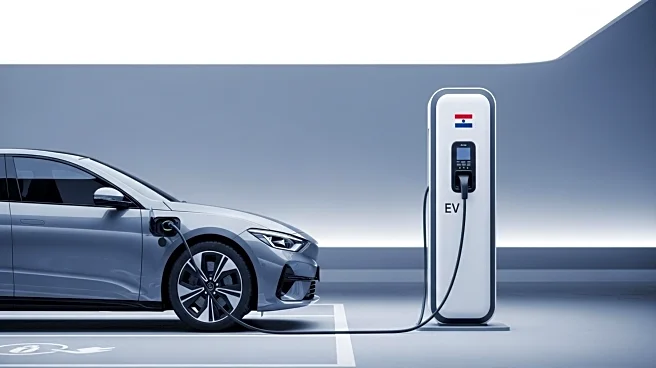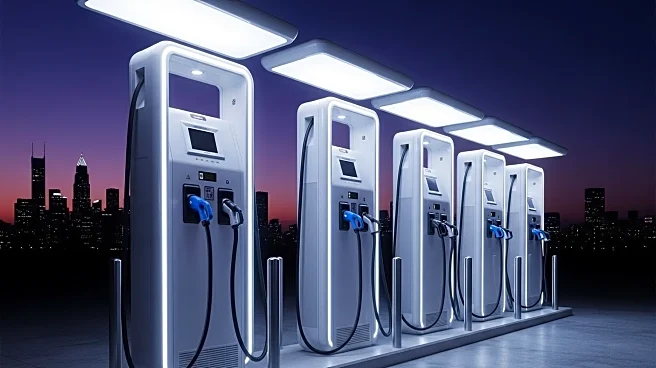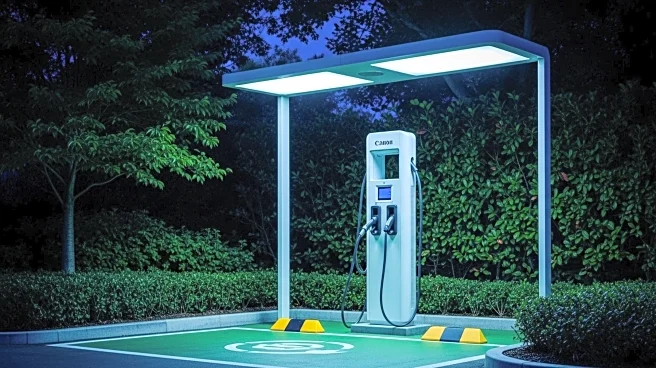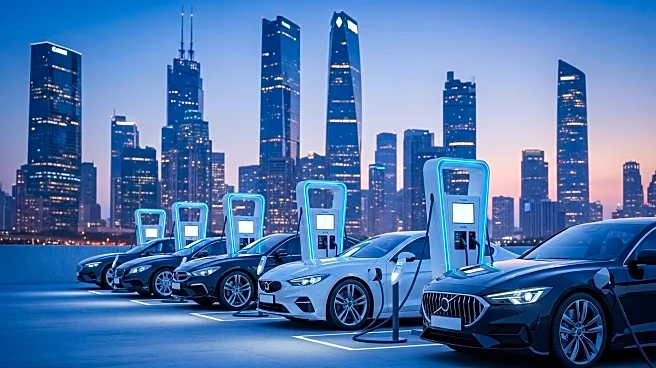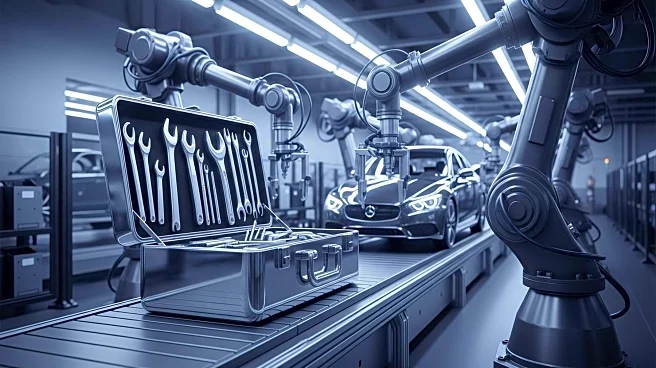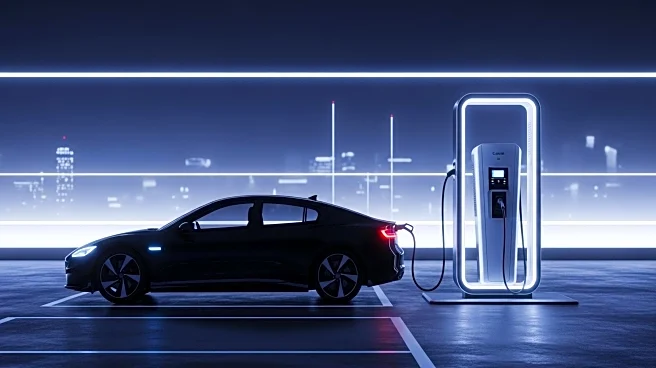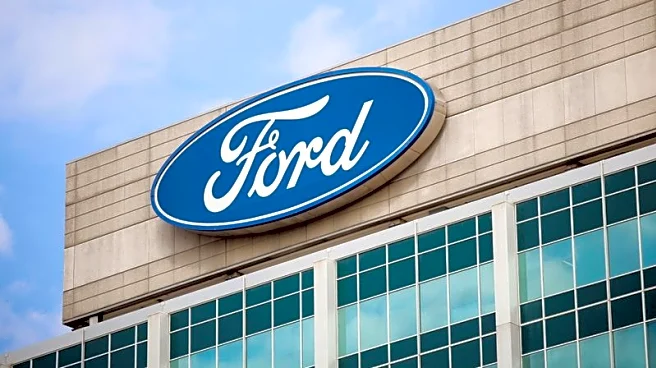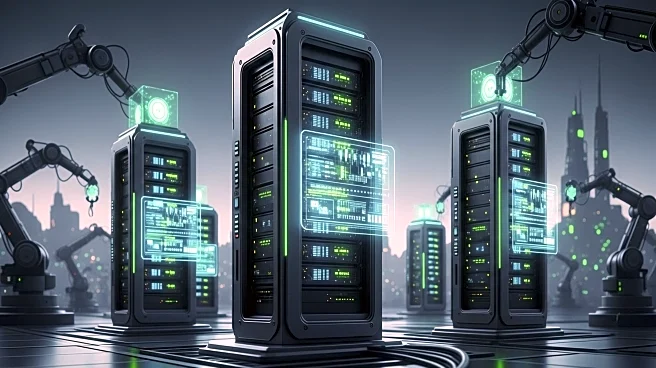What's Happening?
Ford Motor Company has announced an 8.2% increase in its third-quarter U.S. sales, largely driven by the popularity of electric vehicles (EVs) and large SUVs. The company reported a 30.2% rise in sales of all-electric vehicles, reaching a quarterly record of over 30,600 units. Additionally, Ford's 'electrified' vehicles, which include both EVs and hybrids, saw a 20% increase compared to the same period last year. The sales of Ford's SUVs also rose by nearly 10%, with significant gains for larger models and the Mustang Mach E EV, which experienced a 51% increase from the previous year. This surge in EV sales is attributed to consumers accelerating their purchase plans ahead of the expiration of federal EV incentives of up to $7,500 in September.
Why It's Important?
The increase in Ford's sales highlights the growing consumer interest in electric and larger vehicles, reflecting broader trends in the automotive industry towards sustainability and spaciousness. The rise in EV sales, particularly, underscores the impact of federal incentives on consumer behavior, suggesting that such programs can significantly boost market adoption of zero-emission vehicles. However, Ford CEO Jim Farley has expressed concerns that the expiration of these incentives might lead to a decrease in EV market share from the current 10% to 12% to potentially 5%. This potential decline could affect Ford's future sales and the overall momentum of EV adoption in the U.S., posing challenges for automakers in maintaining growth in this segment.
What's Next?
With the federal EV incentives ending, Ford and other automakers may need to explore alternative strategies to sustain the growth in EV sales. This could involve increasing investment in marketing, offering competitive pricing, or enhancing vehicle features to attract consumers. Additionally, the industry might see increased lobbying efforts for the renewal or introduction of new incentives to support the transition to electric vehicles. Stakeholders, including policymakers and environmental groups, are likely to engage in discussions on how to continue promoting sustainable transportation solutions.
Beyond the Headlines
The shift towards electric and larger vehicles also raises questions about infrastructure readiness, such as the availability of charging stations and the capacity of the power grid to support increased EV usage. Furthermore, the environmental impact of producing larger vehicles, even if electric, remains a topic of debate, as it involves considerations of resource use and emissions during manufacturing. These factors could influence future regulatory policies and consumer preferences, shaping the long-term trajectory of the automotive industry.

